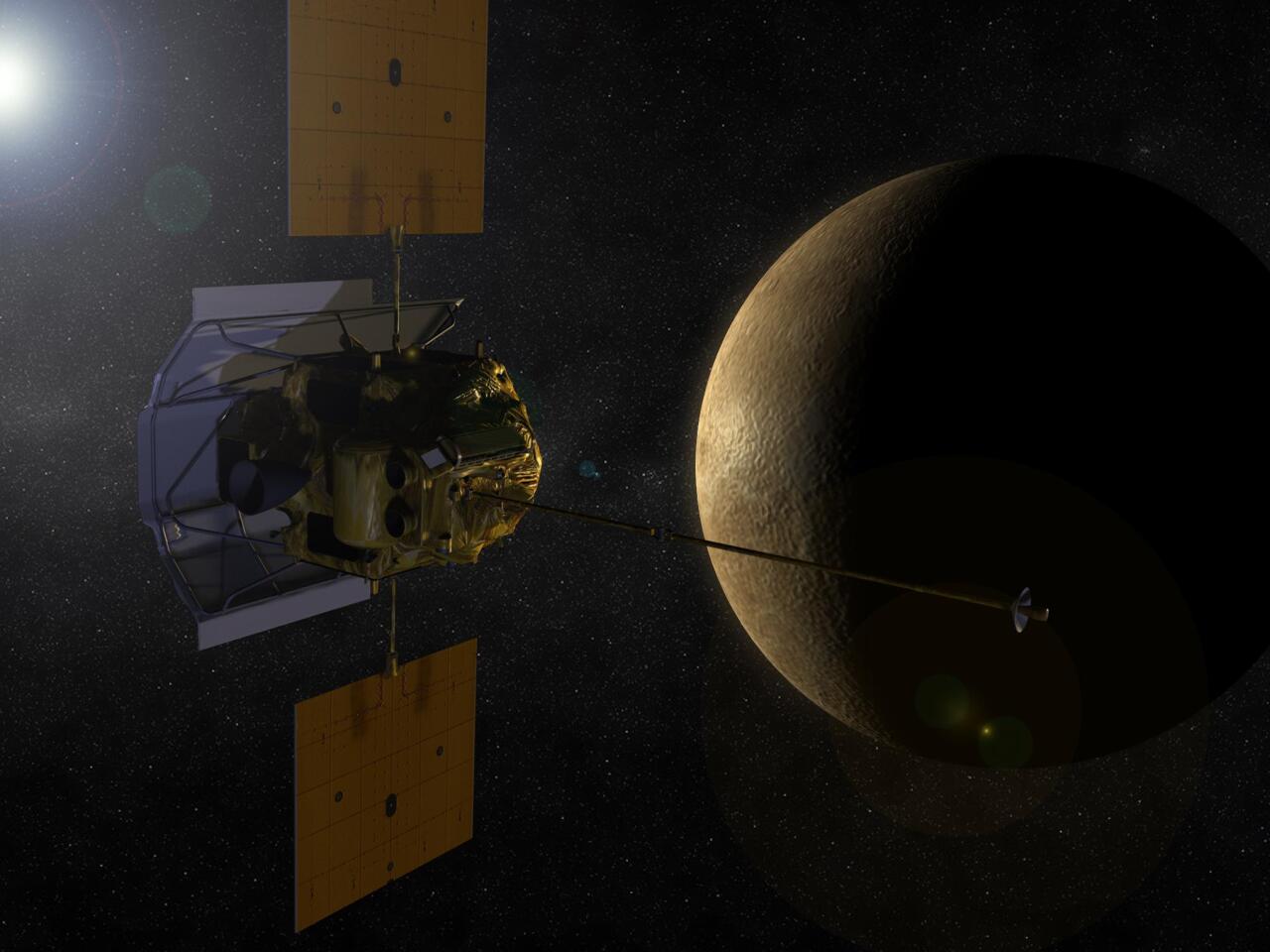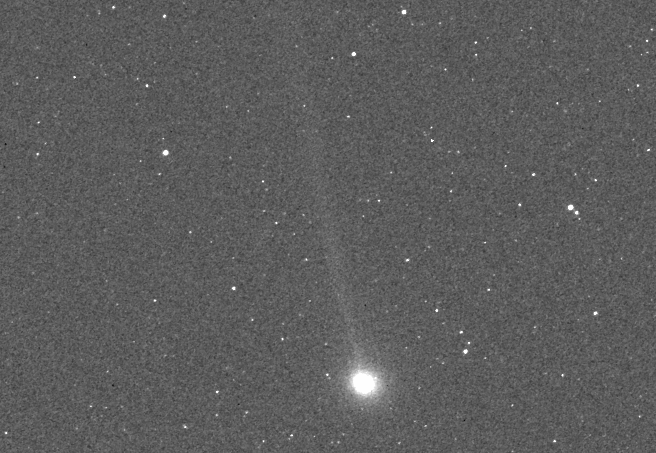Sit out on a clear summer's night and the odds are that you'll be treated to a meteor shower that's the remnant of a comet's passing. However, such showers are not peculiar to our planet. NASA's unmanned MErcury Surface, Space ENvironment, GEochemistry, and Ranging (MESSENGER) orbiter has uncovered evidence that the planet Mercury is subject to the same sort of periodic meteor showers as the Earth, only instead of a light show, it produces a spike in calcium in the planet's exosphere.
Mercury isn't exactly the garden spot of the Solar System. The smallest of the planets and closest to the Sun, it's constantly blasted with solar radiation and as it slowly rotates its daylight side rises to the temperature of molten lead. It's atmosphere, called the exosphere, is also almost non-existent, consisting of traces of gas and dust,
What's even odder about the exosphere is that it doesn't remain constant. MESSSENGER's Mercury Atmospheric and Surface Composition Spectrometer has discovered that the amount of calcium in it rises and falls periodically throughout the nine Mercurian years that MESSENGER has orbited the planet since March 2011.

According to NASA scientists, the most likely source of the calcium and its periodicity is meteor showers. The light shows that we see on Earth during the Leonids, Geminids, and the Southern and Northern Taurids are the remains of comets as they pass by the orbit of our planet – some having returned so many times that the comet is long gone and only the meteors remain.
As a comet orbits the Sun, the sunlight heats up the comet and causes the ice and other volatiles to boil away as gas, which the pressure of the light pushes away to form the comet's tail. Eventually, the comet wears away and the orbit becomes strewn with solid fragments; most only the size of dust particles, like a huge eccentric donut. It's as the Earth passes through this donut that causes the meteor shower as the particles burn up in the Earth's atmosphere.
However, things are a bit different for Mercury. Since there's no atmosphere to speak of, the particles don't burn up. NASA says that as the comet particles turned meteors rain down on Mercury, they hit the surface and vaporize whatever they hit, including molecules of calcium. This impact vaporization, as its called, pumps the calcium into the exosphere, which MESSENGER detects.

The question is, where do the meteors come from. By running computer simulations against candidates and taking into account the effects of the gravity of Jupiter and other planets on comet orbits, NASA narrowed down the source of the Mercury meteors to the comet Encke
"The variation of Mercury’s calcium exosphere with the planet’s position in its orbit has been known for several years from MESSENGER observations, but the proposal that the source of this variation is a meteor shower associated with a specific comet is novel," says MESSENGER Principal Investigator Sean Solomon, of the Lamont-Doherty Earth Observatory at Columbia University, New York. "This study should provide a basis for searches for further evidence of the influence of meteor showers on the interaction of Mercury with its solar-system environment.".Source: NASA








